#VamosCamping: 13 ways you’re camping Latino style—tried and tested by real Latino outdoor enthusiasts
Camping can mean different things to different people and some certainly have different preferences than others. Some like to “rough it” while others prefer a more “glamping” approach. Regardless, camping is a way we enjoy our public lands and it is important to understand our responsibility in caring for them. It is also important to state that without equitable access to our public lands, we are not able to have and enjoy these experiences.
It is important that all communities feel they belong in the outdoors and they can bring their identity into these beautiful scenic landscapes. Latinos have an outdoor identity like many other communities. So here are some 13, trece ways those in the Latino Outdoors community camp, showcasing ways in which we bring our cultura to camping in our public lands:
- Your camping hot chocolate looks familiar…


2. You perfect a bean recipe for the outdoors to get it as close to mom’s

3. Cholula or Tapatio are essential spices–can’t forget your favorite hot sauce

4. What’s for Breakfast? Grandma may be the first one up in the morning, has two pots and a pan going over a fire she built with wood she collected in her apron. That is…unless you happened to be up all night celebrating . Then it’s a couple large cans of menudito… doctored up of course…or chorizo con huevos.

5. There is a place for your huaraches.

Photo credit: Eduardo Gonzalez
6. Regardless of time of day, there is cafe de olla and pan dulce.

7. The first story around the campfire is La Llorona…

8. Instead of cards you’re likely to play Lotería.

9. When your tablecloth is also a blanket and a baby carrier….and it is as colorful as a bird of paradise.

Photo credit: Chasqui Mom
10. Osos, seem to be something to be afraid of like el cucuy, even in places where there are no bears. But no joke with el cucuy, that’s definitely everywhere.

11. Your sleeping bag backup is a San Marcos blanket con la Virgen de Guadalupe or a lion, or a tiger, or horses…. And you’re not the only one sleeping in San Marcos blankets.

12. Piñata time.

Photo credit: Graciela Cabello
13. You rock by using a rock comal.

Photo credit: Eduardo Gonzalez
And you notice so many of these have to do with food….porque abuelita is going to ask, ya comiste?
And yes, I’ve done and encountered all these things, stereotypical as some may seem. I’ve carried my huaraches to the Arctic National Wildlife Refuge, got Tapatio packets in my backpack, and adapted Loteria for the outdoors.
How do you rock your Latino identity in a positive way in the Outdoors? Share and tag with: #VamosOutdoors #VamosCamping #LatinoOutdoors

José González is the Founder of Latino Outdoors. His commentary on diversity and environmental outreach has been featured by High Country News, Outside, Earth Island Journal,and Latino USA, and he has been engaged in collaborations with the White House Council on Environmental Quality, U.S. Department of Interior, and the National Park Service. He also represents Latino Outdoors in several coalitions including the Latino Conservation Alliance and the Next 100 Coalition. He has been recognized with several honors, including the National Wildlife Federation, Grist Magazine, and The Murie Center.
To learn more about the Next 100 Coalition, check out this site and sign the petition.












